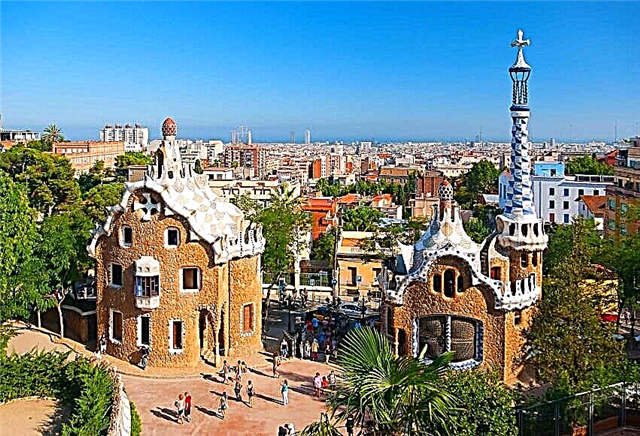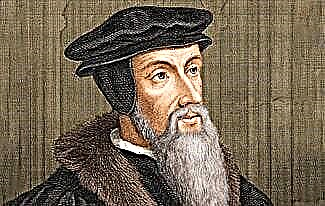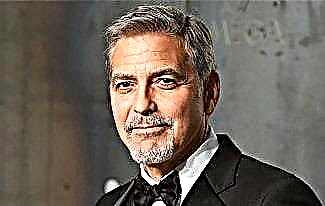Cesare (Caesar) Borgia (cat. Cesar de Borja y Catanei, isp. Cesare Borgia; OK. 1475-1507) - Renaissance politician. He made an unsuccessful attempt to create his own state in central Italy under the auspices of the Holy See, which was occupied by his father, Pope Alexander VI.
There are many interesting facts in the biography of Cesare Borgia, which we will talk about in this article.
So, here is a short biography of the Borgia.

Biography of Cesare Borgia
Cesare Borgia was born in 1475 (according to other sources in 1474 or 1476) in Rome. He is believed to be the son of Cardinal Rodrigo de Borgia, who later became Pope Alexander VI. His mother was his father's mistress named Vanozza dei Cattanei.
Cesare has been trained since childhood for a spiritual career. In 1491 he was entrusted with the post of administrator of the bishopric in the capital of Navarre, and a couple of years later he was elevated to the rank of Archbishop of Valencia, giving him in addition income from several churches.
When his father became Pope in 1493, young Cesare was appointed cardinal deacon, giving him several more dioceses. During this period of his biography, Borgia studied law and theology in the best institutions in the country.
As a result, Cesare became the author of one of the best dissertations in jurisprudence. Religion did not arouse interest in the guy, who preferred secular life to her along with military conquests.
Pope's son
In 1497, the elder brother of Borgia, Giovanni, dies under unclear circumstances. He was killed with a knife, while all his personal belongings remained intact. Some biographers claim that Cesare was the killer of Giovanni, but historians have no facts to prove such a statement.
The following year, Cesare Borgia resigned his priesthood, the first time in the history of the Catholic Church. Soon he managed to realize himself as a warrior and politician.
An interesting fact is that the idol of Borgia was the famous Roman emperor and commander Gaius Julius Caesar. On the coat of arms of the former priest was the inscription: "Caesar or nothing."

In that era, the Italian wars were fought in different feudal territories. These lands were claimed by the French and Spaniards, while the pontiff sought to unite these areas, taking them under his control.
Having enlisted the support of the French monarch Louis XII (thanks to the Pope's consent to divorce and help in the form of replenishment of the army) Cesare Borgia went on a military campaign against the regions in Romagna. At the same time, the noble commander forbade robbing those cities that capitulated of their own free will.
In 1500, Cesare occupied the cities of Imola and Forli. In the same year, he led the papal army, continuing to gain victories over enemies. The cunning father and son fought battles, alternately enlisting the support of the warring France and Spain.
Three years later, the Borgia conquered the main part of the Papal States, reuniting the disparate territories. Next to him was always his loyal friend Micheletto Corella, who had a reputation as an executioner from his master.
Cesare entrusted Corellia with the most varied and important tasks, which he tried with all his might to fulfill. According to some sources, the executioner was guilty of the murder of the 2nd spouse of Lucrezia Borgia - Alfonso of Aragon.
It is curious that some contemporaries claimed that in need of money, both Borgia poisoned wealthy cardinals, whose fortune after their death returned to the papal treasury.
Niccolo Machiavelli and Leonardo da Vinci, who was an engineer in his troops, spoke positively about Cesar Borgia as a military leader. However, the successful conquests were interrupted by a serious illness of father and son. After a meal at one of the cardinals, both Borgia developed fever, accompanied by vomiting.
Personal life
Not a single signed portrait of Cesare has survived to this day, so all of his modern images are tentative. It is also not known exactly what kind of person he was.
In some documents, Borgia is presented as a truthful and noble man, while in others - a hypocritical and bloodthirsty person. It was said that he allegedly had love relationships with both girls and boys. Moreover, they even talked about his closeness with his own sister Lucretia.

It is reliably known that the favorite of the commander was Sanchia, who was the wife of his 15-year-old brother Jofredo. However, his official wife was another girl, since at that time the marriages between high-ranking officials were concluded not so much for love as for political reasons.
Borgia Sr. wanted to marry his son the Neapolitan princess Carlotta of Aragon, who refused to marry Cesare. In 1499, the guy married the Duke's daughter, Charlotte.
Already after 4 months, Borgia went to fight in Italy and since that time he never saw Charlotte and the soon-born daughter Louise, who turned out to be his only legitimate child.
There is a version that immediately after returning from France, Cesare raped Catherine Sforza, who defended the Forlì fortress. Later, there was a loud kidnapping of the wife of the military leader Gianbattista Caracciolo named Dorothea.
During his lifetime, Borgia recognized 2 illegitimate children - the son of Girolamo and the daughter of Camilla. An interesting fact is that, having matured, Camilla took monastic vows. Uncontrolled sexual intercourse led to the fact that Cesare fell ill with syphilis.
Death
After falling ill with syphilis and the sudden death of his father in 1503, Cesare Borgia was dying. Later he went with his closest associates to Navarre, ruled by the brother of his wife Charlotte.
After seeing relatives, the man was entrusted with leading the Navarre army. In pursuit of the enemy on March 12, 1507, Cesare Borgia was ambushed and killed. However, the circumstances of his death still remain unclear.
Theories were put forward about suicide, loss of mind due to the progression of syphilis and contract murder. The commander was buried in the Church of the Blessed Virgin Mary in Viana. However, in the period 1523-1608. his body was removed from the grave, since such a sinner was not supposed to be in a holy place.
In 1945, the alleged reburial site of the Borgia was accidentally uncovered. Despite the requests of local residents, the bishop refused to bury the remains in the church, as a result of which the commander found peace at its walls. Only in 2007 did the Archbishop of Pamplona give his blessing to move the remains to the church.
Photo by Cesare Borgia














